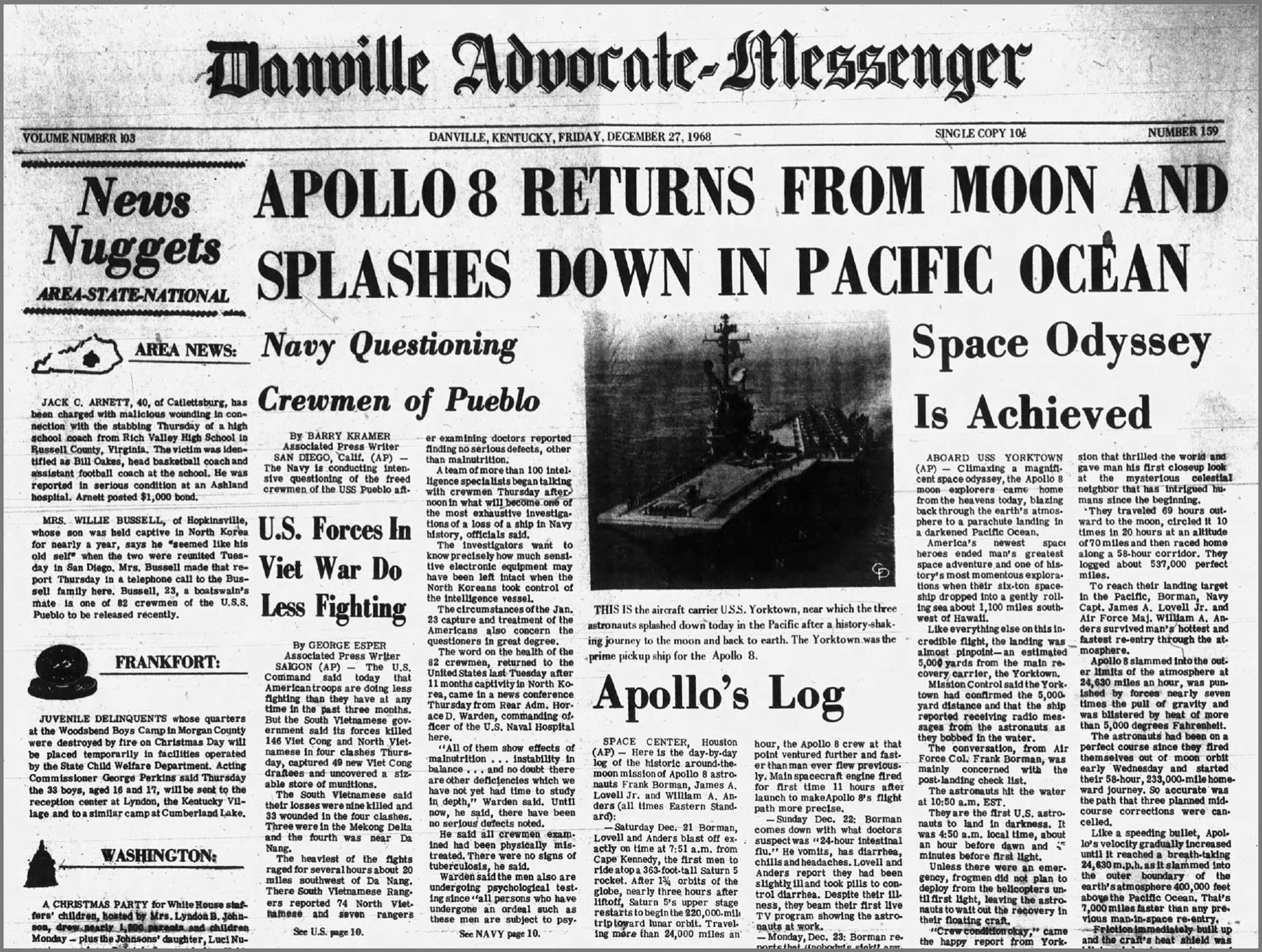Looking Back: Train wrecks were common in the early 1900s
Published 9:49 am Friday, April 17, 2020
(Editor’s note: This is the second part of a two-part series about train wrecks in Danville and – Messenger archives.)
Several train wrecks on the Southern Railway and Louisville & Nashville Railway lines in this area occurred between 1901-1929.
Two attempts were made in December 1901 to cause a wreck in Marion County.
The first attempt was to cause a wreck of a C&0 train near Muldrough’s Hill, 12 miles south of Lebanon. Someone placed a large rail across the track. However, the obstruction was seen by the engineer and the train stopped in time to prevent an accident.
The following night, as the train passed the same spot, a number of rocks were thrown into the passenger cars.
After that, when the train passed the place, the lights were extinguished and the employees were armed with Winchesters to protect themselves from the would-be wreckers.
Two killed
A wreck in June 1915 after the rails spread caused 19 cars to derail near Gravel Switch and deaths of two unidentified men and one injury.
The L&N freight train, bound from Corbin to Lebanon Junction was going at regular speed when the crash occurred. About 200 feet of rail was damaged and traffic was delayed for two days while crews cleared the debris.
The cars were loaded with coal and merchandise when they turned over in the yard of R.H. Devers and were piled up 30 feet high.
Ernest Guthrie of Danville and James Mershon, a brakeman, jumped from the train and another unidentified hobo was injured.
Two killed in crash
Two men were killed and six were injured in June 1904 when a Southern Railway freight collided with a work train in Harrodsburg.
John Scanlan, an engineer of the freight, and Sam Williams, on work train crew, were killed in the crash.
Injured were Clarence Steele, section boss; James Walsh, fireman; Isaac Hoffman, crew; Andrew Elliott,Will Todd and Robert Lusa.
15 cars derailed
Fifteen cars derailed in October 1921 as a L&N train was heading north just west of Will H. Moore’s house near Mitchellsburg. Thirteen of the cars were loaded with coal and the other two with merchandise.
The train tore up about 30 yards of rails.
Cars were piled up in a promiscuous heap along the tracks for several hundred yards and property loss was heavy.
No one was hurt in the slow moving train and the conductor said after a check there was no reason for the wreck.
Wreck in Mercer
A Southern railway train was in a wreck in April 1913, 200 yards north of Vanarsdall Station in Mercer County.
Traffic was delayed several hours after the engine crossed the bridge, which spans a branch of Salt River, causing a coupling to break. The jam-up caused the bridge to break, letting 18 cars fall 25 feet into the creek. The caboose and engine stayed on the tracks. No one was injured.
Box car breaks loose
An unusual crash was caused in December 1926 when a box car on a Southern Railway train came loose in the middle of a train in Mercer County and rolled 200 yards. It crashed into a switch tower and the passenger station in Burgin. None of the other cars left the track.
John T. Baker of Burgin, who was in the watchtower was critically injured.
Danville man injured
Engineer Buddy Woolfolk suffered injuries in the July 1933 crash and several others escaped injuries when an L&N freight train crashed into the rear end of another northbound train, a half mile north of Kings Mountain. Six cars and an engine derailed.
Jim Davis, formerly of Danville, was conductor of the moving train. Conductor of the parked train was Frank Shearer and engineer Ed Silvers, both of Danville.
L&N train wrecks
An L&N freight train, headed north, wrecked in December 1927 at Tie Hollow, a mile and half south of Crab Orchard.
A broken rail caused 20 cars to run into a ditch. Eighteen cars were loaded with coal, one with lumber, and one with acid. Rail traffic was delayed 15 hours.
Broken rail causes crash
Nine people were injured in a L&N train wreck in October 1929, when a broken rail caused the train to plunge off the tracks and into Cedar Creek, six miles south of Stanford.
Nine of the victims were unconscious or in critical condition, according to a doctor with the railroad. None of the injured were from this area, and were taken to Lincoln County Hospital in Stanford for treatment.
The baggage car and the first four coaches of the train went over the rail, the fifth derailed, crashed against a concrete abutment of the Cedar Creek bridge and overturned. Three other cars, three sleeping cars and two day coaches, turned over on their sides.
The first coach plunged down a 20-foot embankment and turned over. The others dived at least partly down the embankment and landed on their sides.
The passengers were thrown about, and landed in a heap with chair cushions piled around them.
The track was torn up for about 400 feet.
Wreckers from Corbin and Louisville arrived to clean up the wreckage and passengers who escaped injury were put aboard the other coaches and returned to Louisville. The tracks opened the next morning.
Broken flange
A northbound Southern Railway freight train wrecked at South Fork in Lincoln County in May 1921, but there were no injuries.
A broken flange caused 13 cars to leave the track and pile up in a heap on the side of the tracks.
J.C. Rodes of Danville was the engineer and Doc Keeton, was conductor.
The freight was mainly lumber, cross ties and iron. Considerable damage resulted from the wreck.
One steel gondola plowed through several of the wooden cars and landed against an embankment and piled along the track.
Hobos on the train narrowly escaped with their lives. One man crawled out from the gondola afterwards and said with a dry drawl, ‘’Well. I liked to have gotten hurt.”
The track was cleared in about five hours.
Cars jump track
A Southern Railway passenger train wrecked in August 1913 near Salvisa. However, no one was hurt but doctors hurried to the scene in automobiles to check on the passengers.
A baggage car and four coaches jumped the track and were almost completely wrecked. One coach was practically reduced to kindling wood.
The engine and sleeper car remained on the track.
The track was torn up and traffic was delayed for the wreck. A special train was sent from Danville to transport passengers to Danville.
High bridge wrecks
Charles Abney of Covington, veteran engineer on the Southern Railway, escaped serious injury and saved the lives of a number of passengers in June 1920. Abney jumped from the train and rolled a distance.
The train was one of the fastest trains operated by the Southern system through Danville, running between Cincinnati and New Orleans.
The passenger train collided with the rear end of a freight train at High Bridge.
Abney suffered slight injuries and two passengers were injured when they were thrown to the floor of the train.
The engine of the passenger train turned over and the rear cars of freight were smashed.
Engineer killed
An engineer was killed and three were injured in November 1904 when a train wrecked at High Bridge near Burgin.
The train was a double-header pulling freight with four cars separating the two engines and traveling about 15 miles per hour. The train was about 300 yards from the bridge when an axle broke on the car following the first engine. It caused 10 cars and the second engine to run off the tracks. Forty cars left the track.
Ben Cunningham of Somerset was killed, and W.F. Bledsoe of Midway, E.C. Cox of Campbellsville, and Ernest Shears of Danville were injured.






